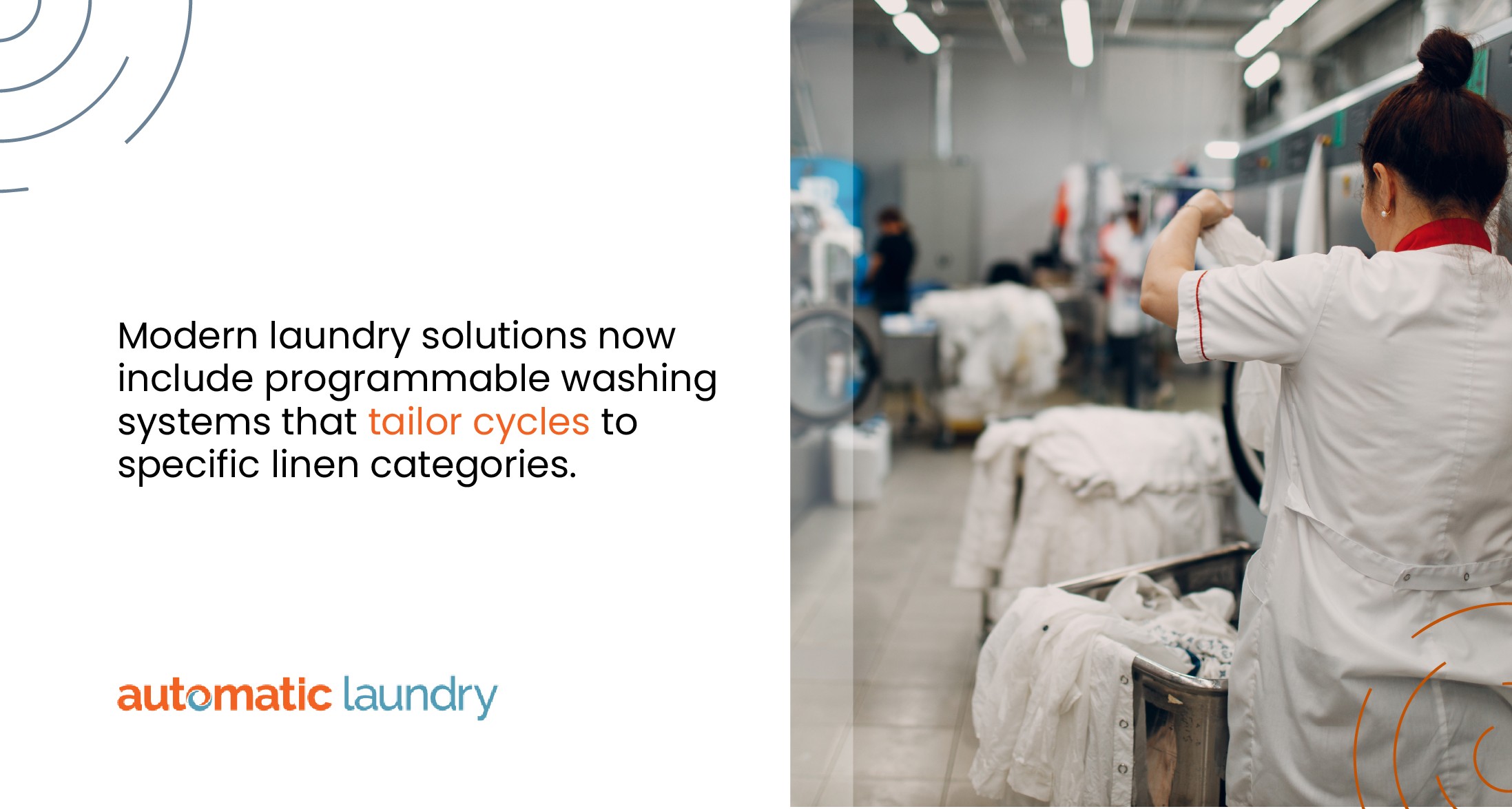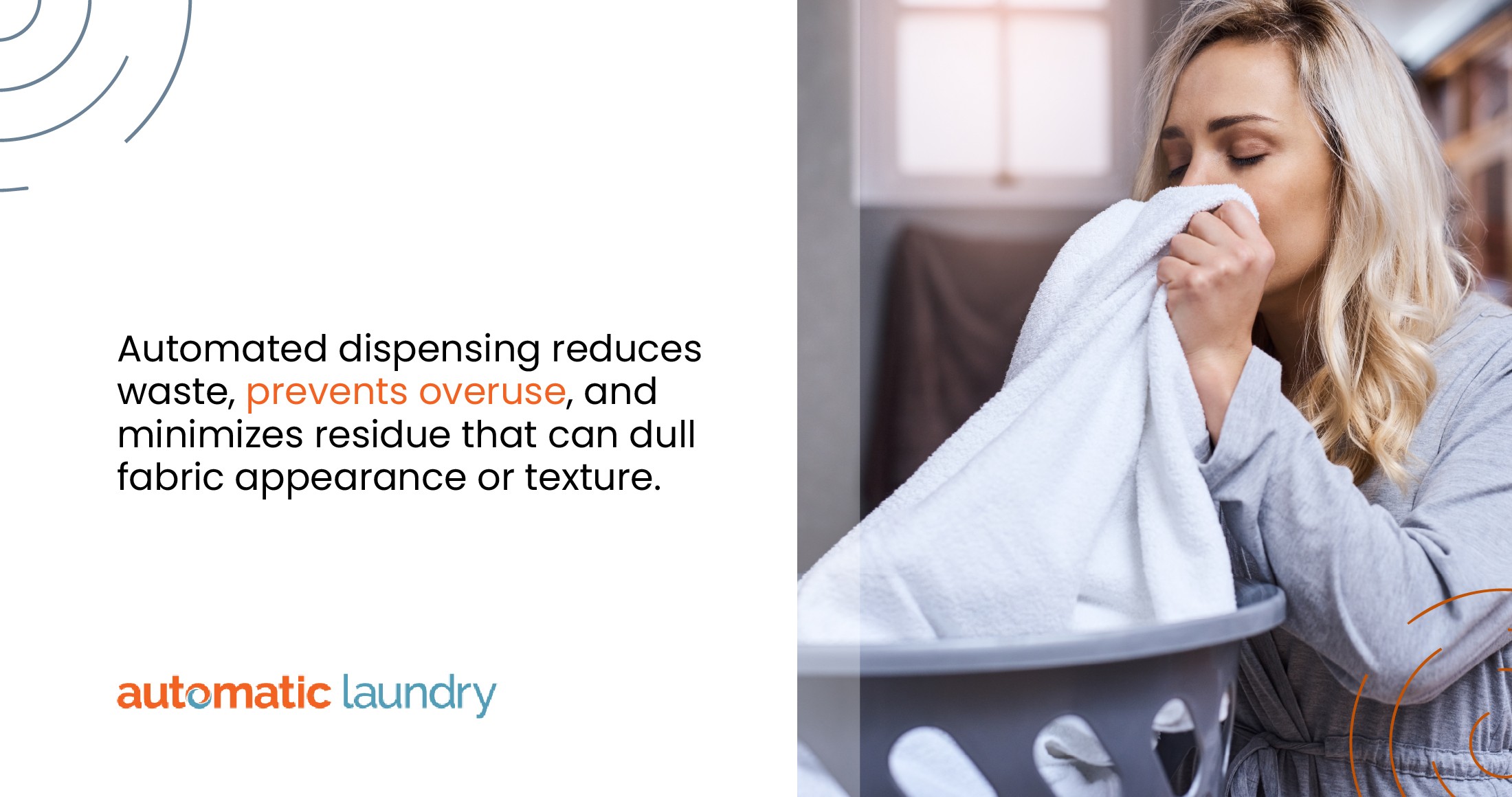Advanced laundry solutions help maintain linen quality in healthcare facilities. Hospital linens, including bed sheets, gowns, towels, and uniforms, are subjected to constant use and frequent washing, which can quickly wear down fabric fibers if proper care is not taken. High-quality linens are essential for patient comfort, and their cleanliness is a critical factor in preventing the spread of infections within medical environments. Poorly maintained fabrics pose a hygiene risk and lead to more frequent replacements, increasing operational costs for property managers.
Adopting more precise wash cycles controls water temperature effectively, and uses the right detergents with accurate dosing, allowing healthcare facilities to preserve fabric integrity while meeting strict sanitation requirements. Investing in professional-grade laundry systems promotes efficient operation, reduces wear on linens, and supports long-term savings.
This article outlines four advanced approaches: optimizing wash cycles, implementing accurate water temperature control, introducing hospital-grade detergents with chemical management systems, and deploying professional laundry solutions for lasting fabric performance.
Solution 1: Optimize wash cycles for fabric longevity
Proper use of laundry solutions starts with selecting the right wash cycle for each type of fabric. Incorrect cycles can cause fibers to weaken, leading to thinning, fading, or tearing over time. In healthcare settings, where linens go through multiple wash and dry processes daily, maintaining proper cycle control is key to preserving fabric strength and appearance.
Linen segregation plays an important role in protecting textile quality. Cotton items should be washed separately from synthetic materials because they require different agitation levels, water temperatures, and cycle durations. Mixing them can cause uneven wear and reduce overall fabric life.
Modern laundry solutions now include programmable washing systems that tailor cycles to specific linen categories. These systems allow property managers to set parameters based on soil level, material type, and moisture retention. Advanced washers also include smart sensors that detect load size and balance, preventing overwashing or excessive spin speeds that damage fibers. Consistent programming and automation help extend linen lifespan while maintaining cleanliness standards essential for healthcare facilities.

Solution 2: Use precise water temperature
Effective hospital laundry solutions depend on careful water temperature management. Temperature directly affects fabric preservation and disinfection quality. Too much heat can weaken fibers and cause shrinkage, while insufficient heat may fail to remove biological contaminants or stains. Striking the right balance helps maintain linen integrity and meet healthcare sanitation requirements.
Recommended temperature ranges
Choosing the correct heat level supports effective cleaning, extends fabric life, and reduces unnecessary wear. Different fabric types and soil levels require specific temperature settings within laundry solutions to achieve optimal results:
- Heavy soil or infected linens – Use a range between 160°F and 180°F to meet thermal disinfection standards and destroy pathogens.
- Light soil and delicates – Keep temperatures between 105°F and 120°F to prevent fiber stress while maintaining cleanliness.
- Mixed fabric loads – Select mid-range temperatures and shorter cycles to minimize wear and maintain consistent results.
Heat Sensors and Monitoring
Modern laundry systems use integrated heat sensors and real-time monitoring tools to maintain precise temperatures. These features prevent overheating, conserve water and energy, and support compliance with hygiene protocols. Continuous tracking helps property managers maintain uniform washing conditions and reduce unnecessary waste while protecting healthcare fabrics from premature deterioration.
Solution 3: Select hospital-grade detergents and chemical management systems
Effective laundry solutions include more than proper wash cycles or temperature settings. The type and precision of detergent use significantly influence fabric lifespan and cleanliness outcomes in healthcare environments. Hospital-grade detergents are designed to meet strict sanitation requirements while protecting the delicate fibers in medical linens.
Enzyme-based detergents are a popular solution because they break down organic matter such as blood and body fluids, without requiring harsh chemical concentrations. Their targeted action reduces fabric stress, helping linens retain their softness and color through repeated washes. pH-balanced formulations prevent residual alkalinity that can weaken fibers over time or cause skin irritation for patients and medical staff. The consistent use of these solutions supports hygiene compliance while extending linen usability.
Automated Chemical Dispensers
Modern laundry solutions often incorporate automated chemical management systems that precisely distribute detergents, softeners, and sanitizers. Automated dispensing reduces waste, prevents overuse, and minimizes residue that can dull fabric appearance or texture. These systems provide reliable chemical dosing that keeps washing results uniform while lowering operational costs.
Eco-Efficient and Sustainable Options
Sustainability is an increasing priority in healthcare laundry operations. Eco-efficient detergents and rinse aids reduce water consumption because they require fewer rinse cycles to achieve full cleanliness. Choosing concentrated, biodegradable formulas also supports environmental goals without compromising hygiene or material quality, allowing facilities to maintain cleanliness and responsibility in their laundry practices.

Solution 4: Invest in professional laundry solutions for operational efficiency
Upgrading to advanced laundry solutions can transform how healthcare facilities manage linen care and operational workflows. Professional-grade equipment, such as industrial washers, ozone sanitation systems, and water recycling technology, helps maintain consistent cleaning quality while minimizing fabric wear. These systems are built for the high demands of healthcare environments, supporting hygiene compliance and long-term material preservation.
Advanced Equipment and Technology Benefits
Modern laundry solutions are equipped with automation and intelligent sensors that optimize each cycle. Load sensors adjust water and detergent volume based on fabric quantity, reducing unnecessary resource use. Energy-efficient dryers lower heat exposure, helping fabrics retain durability and softness after repeated washes. Ozone systems also contribute to disinfection at lower temperatures, which protects fibers while maintaining hygiene standards.
Operational and Financial Advantages
Investing in professional-grade systems supports measurable cost savings over time. Facilities experience fewer linen replacements, reduced water and energy use, and a decrease in fabric damage claims. These outcomes contribute to improved budgeting and a stronger return on investment as linen replacement cycles become less frequent.
Partner with laundry specialists
Partnering with specialized providers of laundry solutions helps healthcare facilities sustain high-quality linen standards and operational efficiency. Expert vendors offer ongoing maintenance, performance monitoring, and chemical management support to keep laundry systems running reliably and in full compliance with sanitation requirements. With professional oversight, property managers can focus on patient care while maintaining clean, long-lasting linens that reflect the quality of their facilities.
For a dependable partner that understands the unique needs of healthcare operations, Automatic Laundry delivers technology-driven laundry solutions designed to improve performance and reduce costs. Reach out to explore how our services can transform your facility’s laundry management and extend the life of every linen.


